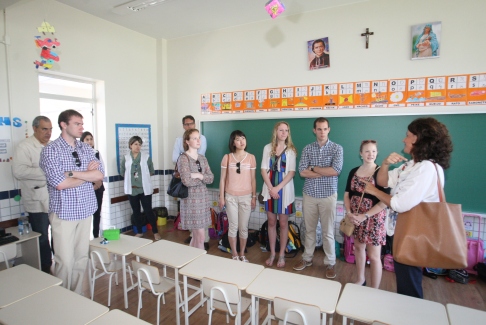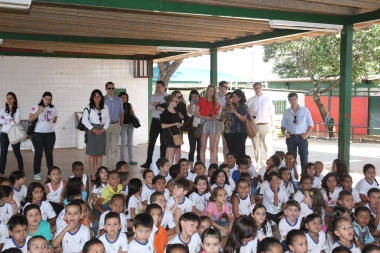by Eric Tarosky
To say the least, the two weeks we spent in Brazil were really the trip of a lifetime. From the food we got to eat, the sights we got to see, and the friends we made along the way, I cannot quite express how grateful I am to have had the opportunity to travel to and explore such a remarkable country.
What struck me throughout the entire trip was the fact that, even though Brazil and the United State are different in so many ways, there are overarching similarities that are universal. These included things like talking to some Brazilian students about our shared favorite TV show, How I Met Your Mother, to many commonalities in the educational system as well as trends in the field.
During my freshman year at Penn State, I had the chance to visit and teach in a public high school in inner city Philadelphia. This school, in almost every way, was startlingly different from the middle-class, suburban high school I attended as a student. The disparity between the educational opportunities afforded to me, and those given to the students in Philadelphia, is something that has stayed with me to this day. For this reason, I found the similar disparity present in the Brazilian educational system to be interesting.
On one day of our visit, we toured a public school in Ceilandia, a satellite city of Brasilia. The school was without many educational luxuries, or even necessities. While the classrooms were taken care of extremely well, it was obvious that many of the materials were inadequate or outdated. Even the playground that was considered “new” was rather rough around the edges.
The next day we toured a private school district in the capital and the differences were startling. Everything from the classrooms to the playground to the athletic facilities at the school was immaculate. It was hard to believe that the two schools could be so close together physically, and yet so many leagues apart in terms of resources. This shocked me at first until I thought back to my experiences in Philadelphia and the juxtaposition of that world to the one in which I grew up. In the end, it became clear that educational inequalities are not simply a Brazilian problem or and American problem, but a universal problem.
The one thing that was consistent between the two schools, however, were the people working there. In both locations we were greeted by a staff of kind and enthusiastic professionals who were eager to show us around the places they clearly cared so much about. At the end of the day I suppose this is what makes the greatest difference in a child’s education after all.

Beutiful article, Jason! I agree with you – care and love is what makes the difference. No only in Education.
Cristina, don’t thank me, thank Eric. It was his post.